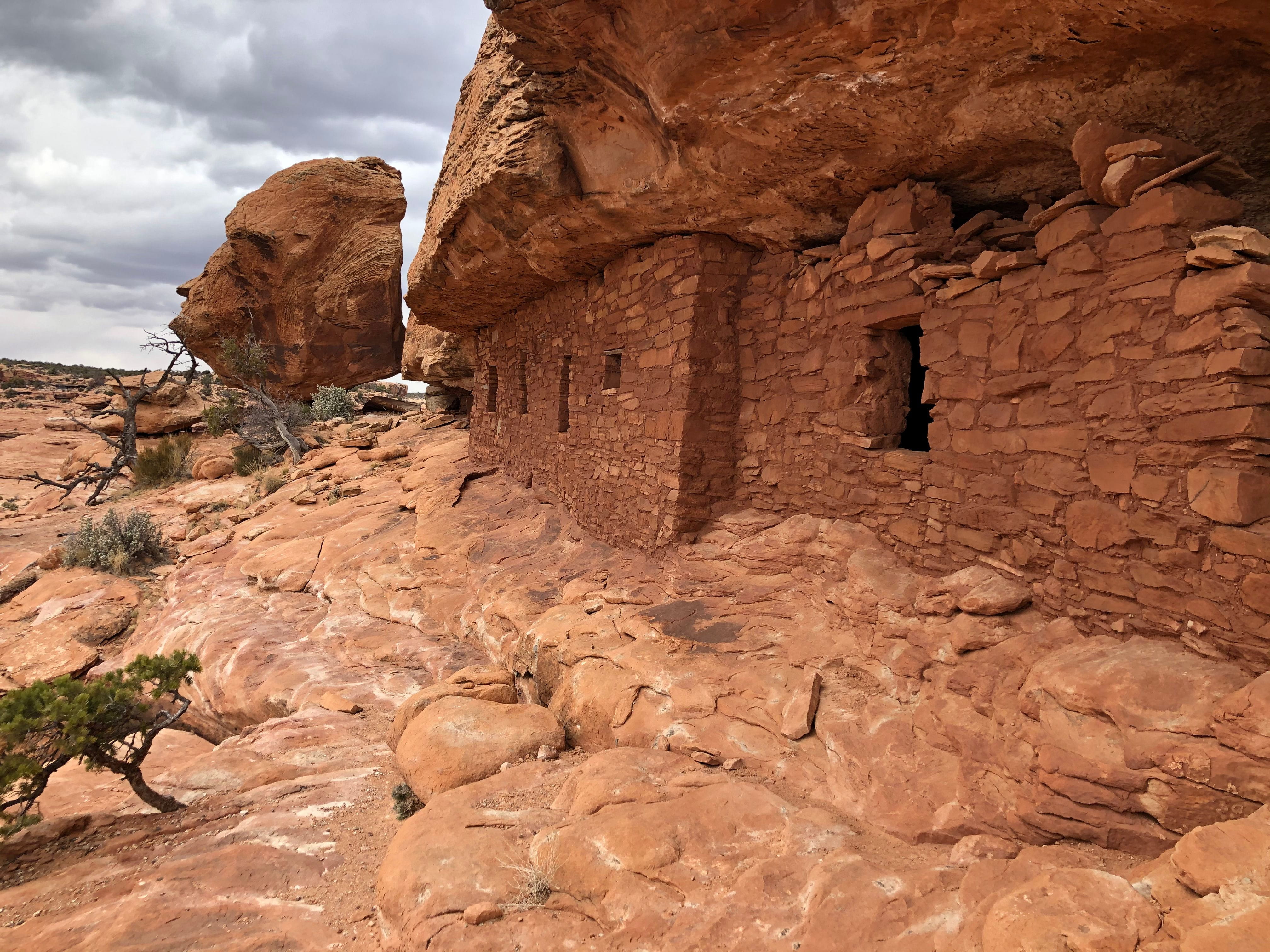Visiting Cultural Sites

Rock Imagery Defined
Pictographs and petroglyphs are abundant in the southwest desert region and are referred to as rock imagery.
Pictographs are figures that were painted on rock surfaces, usually with a stick brush or fingers. The “paint” consisted of minerals, ash, charcoal, crushed plants, or a mixture of these.
Petroglyphs are images that were chipped, ground, scratched, or pecked into rock surfaces. Oftentimes you will see both methods used concurrently. Petroglyphs have survived the ravages of time since they are engraved and not painted.
The rock imagery found in this entire region can be traced as far back as 3000 B.C. through the 19th century. Earliest drawings are classified as Desert Archaic, then Ancestral Puebloan, and the most recent are Navajo and Ute traditions. Absolute dating of rock imagery is challenging; relative dating is easier.
Many Indigenous Tribes and Pueblos use rock imagery to tell stories and share information. Archaeologists who have studied the local rock imagery suggest that it may represent religious practices, celestial occurrences, mythological events, migrations, hunting trips, resource locations, or travel routes.
Dwellings and Granaries
This area has abundant rock imagery, dwellings, ceremonial sites, and granaries reflecting the historical and cultural significance to a variety of Indigenous peoples.
A dwelling is a collapsed structure with sherds of pottery and stone tools often left on the dusty grounds. You can often see handprints in the mud from when the structure was being built.
A granary is a storehouse or room for threshed grain or animal feed. Granaries are often built above the ground to keep the stored food safe from mice and other animals.
Moab Museum
Take a virtual time capsule to the turn of the first millennium, when ancient people lived throughout the American Southwest. Learn how these early inhabitants sustained themselves in a region with scarce sources of water and food – and how their stories are told on stone. MoabMuseum.org.
Edge of the Cedars State Park Museum
Visit the Edge of the Cedars, in Blanding, for a close-up view of some of the most remarkable prehistoric artifacts left in the Four Corners region by the Ancestral Pueblo people. The Museum exhibits intricate pottery and baskets spanning thousands of years, and features contemporary murals of San Juan County pictographs and petroglyphs. 435-678-2238, StateParks.Utah.gov/Parks/Edge-of-the-Cedars.
Bears Ears Education Center
The Bears Ears Education Center teaches how to respectfully visit the cultural and natural spaces of Bears Ears Natural Monument, unquestionably one of the most extensive archaeological areas on Earth. The center offers information on camping and hiking along with maps and tips on how to help protect the fragile resources of the region by visiting with respect. 435-672-2402, BearsEarsPartnership.org/Visit/Visitor-Info.

Visit With Respect
Archaeological sites and artifacts are integral to American history and sacred to many Indigenous peoples. By treading softly and leaving things as we find them, we show respect for those who came before us and those who will visit after us.
Leave things exactly as you found them. It is illegal to collect artifacts from public lands, including cultural artifacts, fossils, tracks, and even historic “trash.” Dwellings are also artifacts, and should be treated with respect as well.
Help preserve sacred and precious rock imagery panels. The imagery is extremely fragile, and once damaged, the site can never be repaired to its original condition. Evidence of vandalism exists: bullet impacts, names and dates incised on the rock surface, remains of latex molds, and chalk marks. Don’t add vandalism of any kind.
Tips for Visiting Sites

VIEW SITES FROM A DISTANCE
Many Indigenous peoples consider this landscape sacred, and numerous tribal elders ask visitors to view sites from a distance. This small act honors Tribal beliefs and protects cultural resources from the destructive effects of visitation.

DON’T TOUCH ROCK IMAGERY OR MAKE YOUR OWN
Natural oils on your hands can destroy delicate rock imagery. Vandalism of petroglyphs and pictographs erases stories of early Indigenous peoples and destroys the experience for future visitors.

STEER CLEAR OF ANCESTRAL STRUCTURES
Structures are spiritually alive and still hold cultural significance to Tribal peoples. When recreating, visitors should refrain from leaning on walls, no matter how solid they look and avoid touching, standing on, or climbing in structures as they can be easily damaged.

LEAVE CULTURAL BELONGINGS WHERE THEY ARE
Cultural belongings such as pottery pieces, flakes and stone tools, corn cobs, and textiles left by early Indigenous peoples are still sacred to Tribes and Pueblos. Ancestral items and historic artifacts help researchers learn about the past. It’s illegal to remove such items from public lands.

DOGS AND ARCHAEOLOGY DON’T MIX
To prevent erosion and degradation, dogs are not allowed in or near archeological sites. Always check beforehand if dogs are permitted in an area or region. Remember that many of these sites are culturally significant, so please make sure to leash pets, keep them away from cultural sites, and don’t let them dig.

CAMP AND EAT AWAY FROM ARCHAEOLOGY
Ancestral sites and structures are where Tribes and Pueblos believe their ancestors’ spirits still reside. Camping, fires, and food can damage cultural sites and spoil the view for other visitors. Remember to pack out all your waste, including food scraps and poop.

PACK OUT YOUR POOP
Human and pet waste threaten fragile ecosystems and drinking water for hikers and wildlife alike. Poop near cultural sites is disrespectful to the Tribes and Pueblos that revere this sacred cultural landscape. When facilities are not available, please pack out your waste.